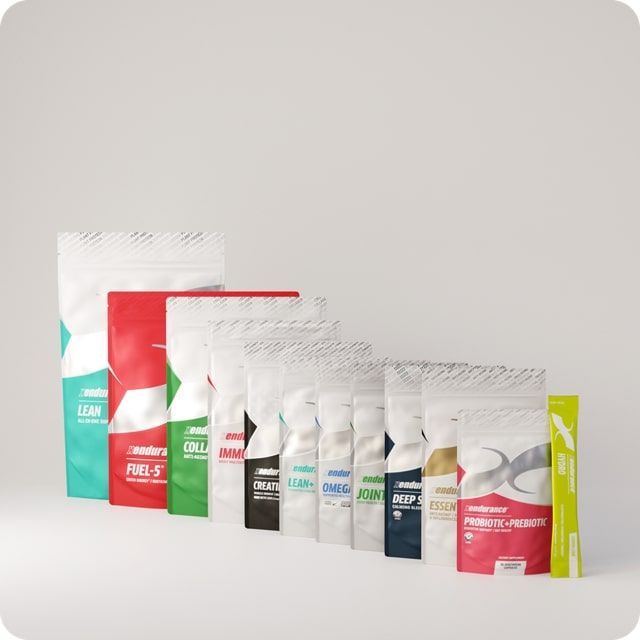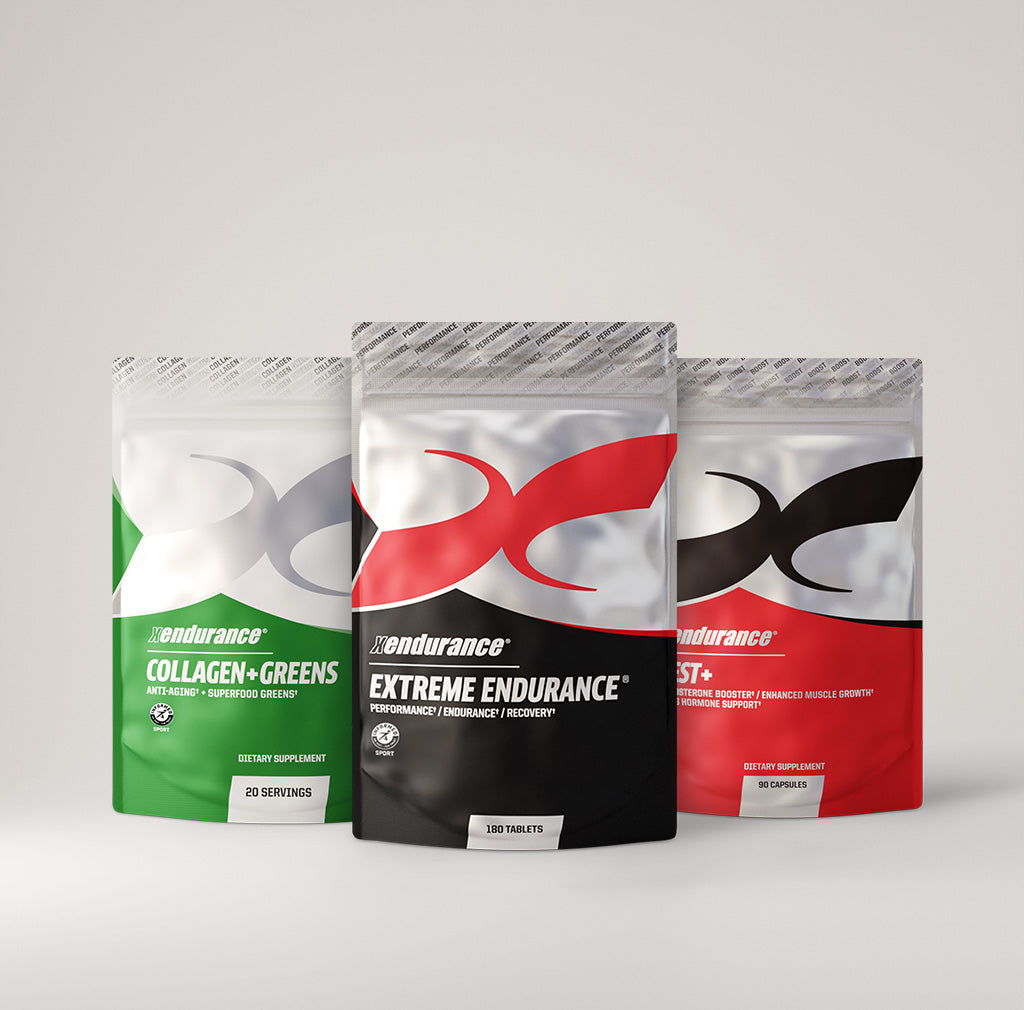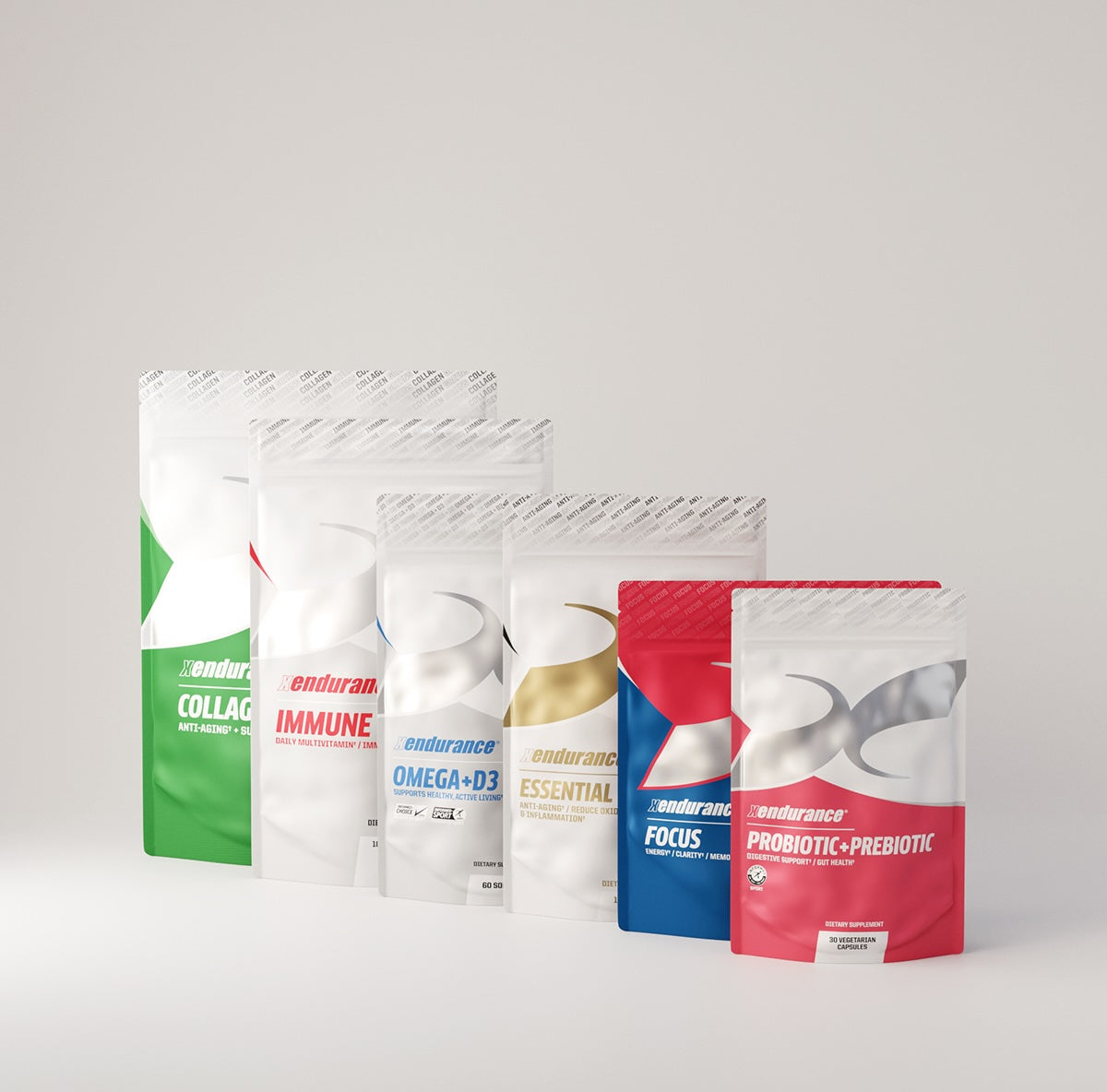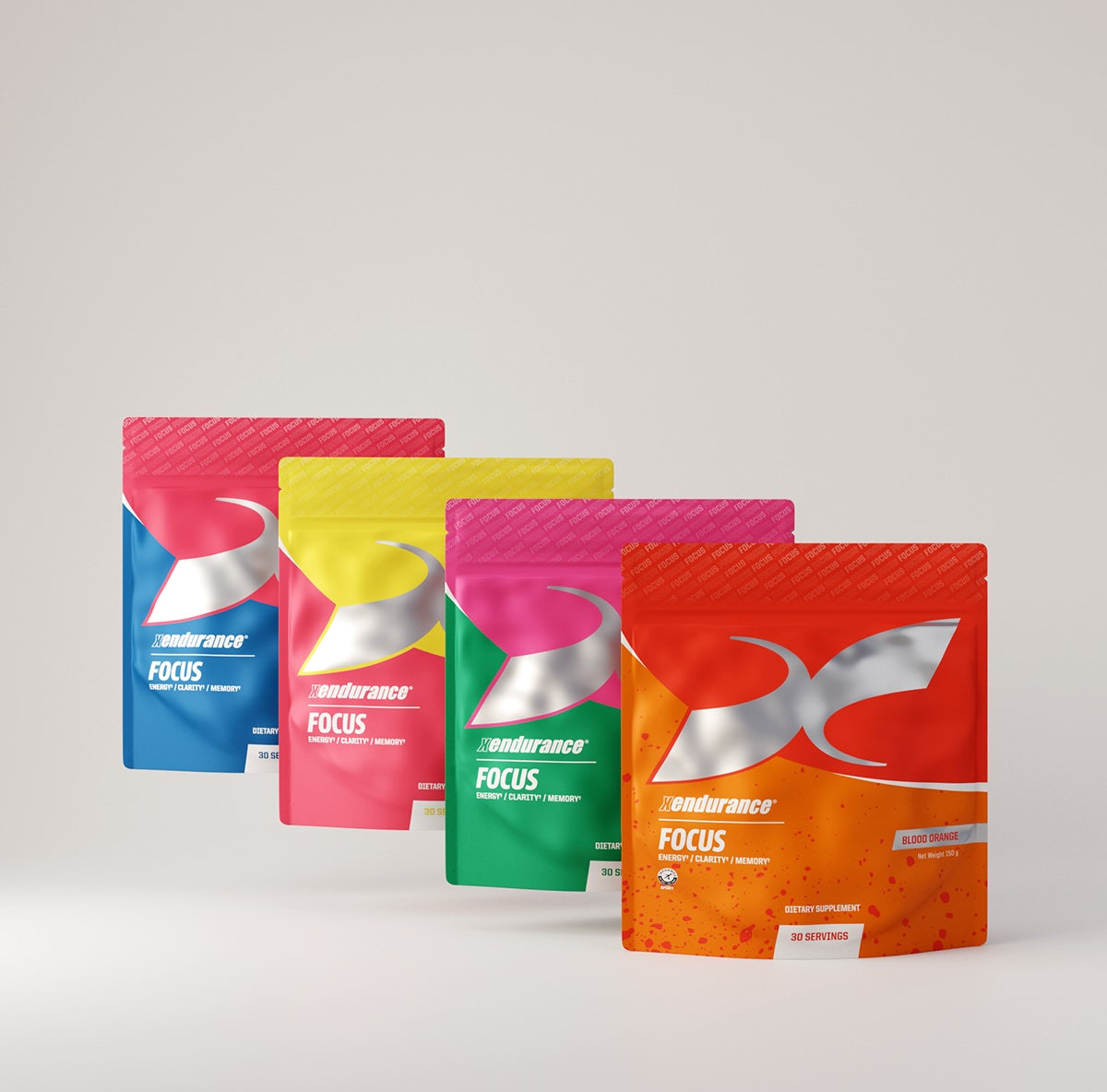Magnesium is one of those unsung heroes of the nutrient world—quietly powering over 300 biochemical reactions in your body, from muscle function to energy production. Yet, many of us don’t get enough, and if you’re active, your needs might be even higher. So, how much magnesium do you really need? What are the best types, and what happens if you overdo it? Let’s break it down, explore the benefits, and spotlight a supplement like Xendurance’s Extreme Endurance that’s been making waves since 2008 for its performance-boosting prowess.
How Much Magnesium Do You Need?
The amount of magnesium you need depends on your age, sex, and life stage. The National Institutes of Health (NIH) sets the Recommended Dietary Allowances (RDAs) as follows:
- Adult Men: 400–420 mg per day (400 mg for ages 19–30, 420 mg for 31+)
- Adult Women: 310–320 mg per day (310 mg for 19–30, 320 mg for 31+)
- Pregnant Women: 350–360 mg per day
- Lactating Women: 310–320 mg per day
These numbers are baselines for the average person. Kids need less (e.g., 80 mg for 1–3 years, up to 240 mg for 9–13 years), while teens fall closer to adult ranges. But here’s the kicker: if you’re working out a lot—think intense cardio, weightlifting, or endurance training—your magnesium needs can climb. Studies suggest that physical activity increases magnesium loss through sweat and urine by 10–20%, potentially pushing your requirement closer to 500 mg or more daily for men and 380 mg or more for women, depending on intensity and frequency. Athletes, especially, might need to pay attention to this.
Top Types of Magnesium and Their Uses
Not all magnesium is created equal. Different forms have unique properties, absorption rates, and purposes. Here’s a rundown of the top types:
- Magnesium Citrate
- What It’s Used For: A go-to for constipation relief due to its laxative effect, it’s also well-absorbed and supports general magnesium levels.
-
Why It’s Great: High bioavailability makes it a solid all-rounder for boosting magnesium status.
- Magnesium Glycinate
- What It’s Used For: Known for calming the nervous system, it’s a favorite for sleep support, stress relief, and muscle relaxation without the digestive upset of other forms.
-
Why It’s Great: Gentle on the stomach and highly absorbable, it’s ideal for those with sensitive systems or chronic tension.
- What It’s Used For: Often found in over-the-counter antacids and laxatives, it’s less about boosting magnesium levels and more about quick digestive fixes.
- Why It’s Great: Cheap and effective for short-term relief, though it’s poorly absorbed for systemic benefits.
- Magnesium Malate
- What It’s Used For: Linked to energy production (thanks to malic acid’s role in the Krebs cycle), it’s popular for fatigue, fibromyalgia, and muscle recovery.
-
Why It’s Great: A good pick for active folks needing sustained energy and less soreness.
- Magnesium Hydroxide
- What It’s Used For: Best known as an antacid and laxative, it’s a key ingredient in milk of magnesia, tackling heartburn, indigestion, and constipation with ease.
- Why It’s Great: It neutralizes stomach acid-fast and pulls water into the gut for relief, while still pitching in magnesium for muscle and nerve support—though absorption is lower than other forms, it’s a champ for short-term digestive wins.
Each type shines in its niche, so your choice depends on your goal—whether it’s better sleep, less cramping, or a bathroom assist.
Do You Need More Magnesium If You Work Out a Lot?
Yes, absolutely. Exercise ramps up your magnesium demand in a few ways. First, you lose it through sweat—endurance athletes can drop 10–20 mg per hour, more if it’s hot. Second, your muscles and energy systems lean hard on magnesium during workouts for contraction, relaxation, and ATP production. Research shows that even a marginal deficiency can tank performance, increase lactic acid buildup, and slow recovery. For example, a 2006 study found that low magnesium impairs exercise efficiency, while active folks might need 10–20% more than the RDA to stay optimal. If you’re hitting the gym daily or training for a marathon, you’re likely in that higher bracket—closer to 480–500 mg for men and 360–380 mg for women.
Benefits of Magnesium
Magnesium’s benefits are vast and well-documented. Here’s why it’s a game-changer:
- Muscle Function: It regulates contraction and relaxation, reducing cramps and soreness—crucial for athletes or anyone with restless legs.
- Energy Production: Magnesium helps convert food into ATP, your body’s energy currency, keeping you powered through workouts or long days.
- Sleep and Stress Relief: It boosts GABA, a calming neurotransmitter, helping you unwind and sleep deeper—vital for recovery.
- Bone Health: About 60% of your magnesium lives in your bones, supporting density and warding off osteoporosis.
- Heart Health: It keeps blood pressure in check and supports a steady heartbeat, lowering cardiovascular risks.
- Blood Sugar Control: It aids insulin function, potentially reducing diabetes risk—a perk for everyone, active or not.
For those who work out, the muscle recovery and energy perks are especially clutch. Studies link magnesium supplementation to less muscle damage in cyclists and better endurance in animal models, hinting at its performance edge.
What Happens If You Get Too Much Magnesium?
Too much magnesium—usually from supplements, not food—can throw your system off. The Tolerable Upper Intake Level (UL) is 350 mg per day from supplements (on top of dietary intake), though your body flushes excess from food naturally. Symptoms of overdoing it include:
- Diarrhea: The most common side effect, especially with forms like citrate or oxide.
- Nausea and Cramping: Your gut might protest with discomfort or bloating.
- Low Blood Pressure: Rare, but possible with extreme doses, leading to dizziness or fatigue.
- Heart Issues: Very high levels (think 5,000 mg+) can slow your heart rate or cause arrhythmias, though this is mostly a risk with IV overdoses or kidney problems.
Toxicity is rare unless you’re chugging supplements without regard—stick to the RDA or slightly above for active lifestyles, and you’re golden.
Xendurance’s Extreme Endurance: A Magnesium-Packed Powerhouse
Now, let’s talk about a supplement that’s been turning heads since 2008: Xendurance’s Extreme Endurance. This isn’t just a magnesium pill—it’s a proprietary formula clinically proven to enhance performance and recovery, trusted by world-class athletes for over a decade. What sets it apart?
- The Formula: Extreme Endurance blends magnesium (in the form of magnesium hydroxide and oxide) with electrolytes like calcium carbonate, potassium chloride, and trace minerals like selenium and chromium. Add in papain (an anti-inflammatory enzyme) and catechins (antioxidants from green tea), and you’ve got a multi-pronged approach to athletic support.
- Clinical Backing: Over 12 studies, including two gold-standard, published, double-blind, placebo-controlled trials, show it reduces lactic acid by 26%, boosts aerobic threshold by double digits, and cuts oxidative stress by 39% in just 10 days. That’s less soreness, better stamina, and faster recovery—hard data, not hype.
- Magnesium Content: Each daily dose (6 tablets—3 morning, 3 evening) delivers ample magnesium, meeting or exceeding the RDA for most adults. It’s designed to cover your needs without requiring an additional stand-alone magnesium supplement. Save your money!
Benefits for Performance and Recovery:
- Lactic Acid Reduction: By buffering acidity, it lets you push harder without that burning sensation, perfect for endurance or HIIT.
- Faster Recovery: Less muscle damage and oxidative stress mean you’re back at it sooner, not dragging through DOMS.
- Stamina Boost: Improved energy metabolism and VO2 max keep you going longer, whether you’re running trails or lifting heavy.
- Overall Health: The antioxidants and electrolytes support cellular health and hydration, benefits that extend beyond the gym.
Why You Don’t Need a Stand-Alone Magnesium Supplement with Extreme Endurance
Here’s the clincher: Extreme Endurance’s daily dose provides enough magnesium to meet your needs—especially if you’re active. The formula’s synergy means you’re not just getting magnesium but a full spectrum of performance enhancers. A standalone magnesium supplement might push you over your needs and risk diarrhea or other side effects when Extreme Endurance already balances it for you. Plus, it’s tailored for athletes—unlike generic magnesium pills that might lack the recovery or stamina perks. Since 2008, pros have relied on it as an all-in-one, skipping the clutter of extra bottles.
Wrapping It Up
Magnesium is non-negotiable—whether you’re a couch potato or a marathoner. Men need 400–420 mg, women 310–320 mg, and if you’re sweating buckets, tack on 10–20% more. Pick your type based on your needs—glycinate for sleep, citrate for digestion, malate for energy—and enjoy benefits like stronger muscles, better sleep, and a happier heart. Too much? Watch for loose stools or worse. But with something like Extreme Endurance, you’re covered: a proven, magnesium-rich formula that’s been optimizing performance and recovery since 2008. No extra supplement is needed—just one smart daily dose to keep you thriving.









Leave a comment
This site is protected by hCaptcha and the hCaptcha Privacy Policy and Terms of Service apply.